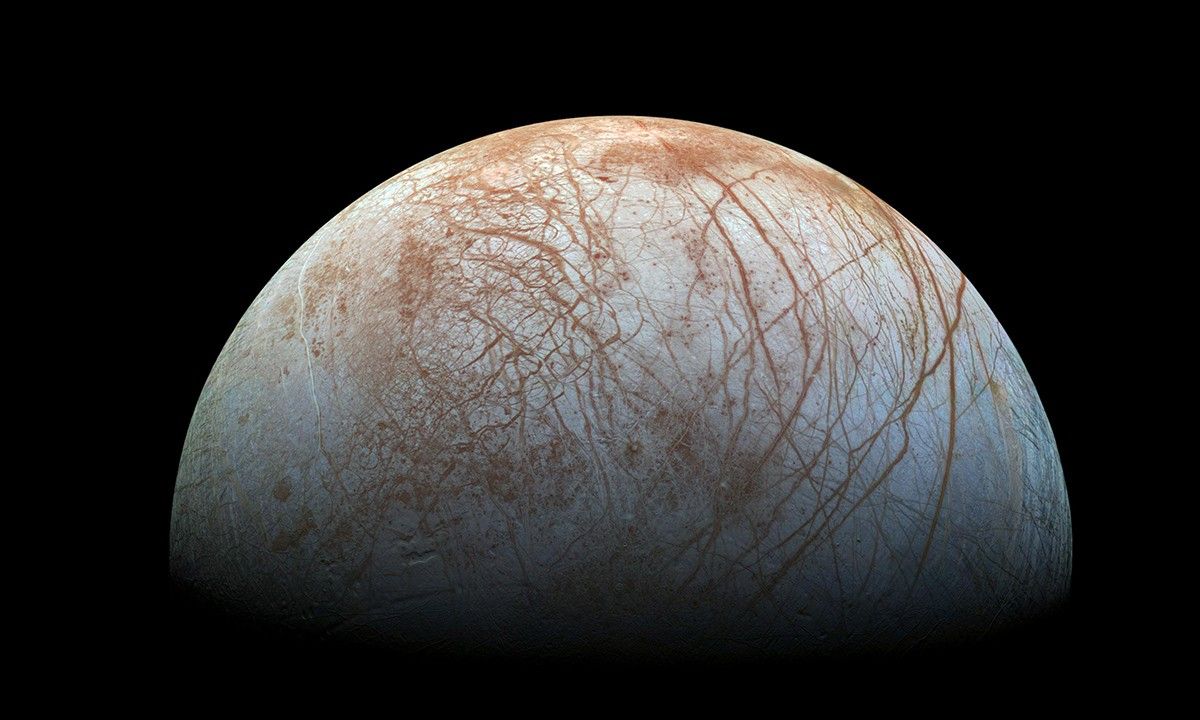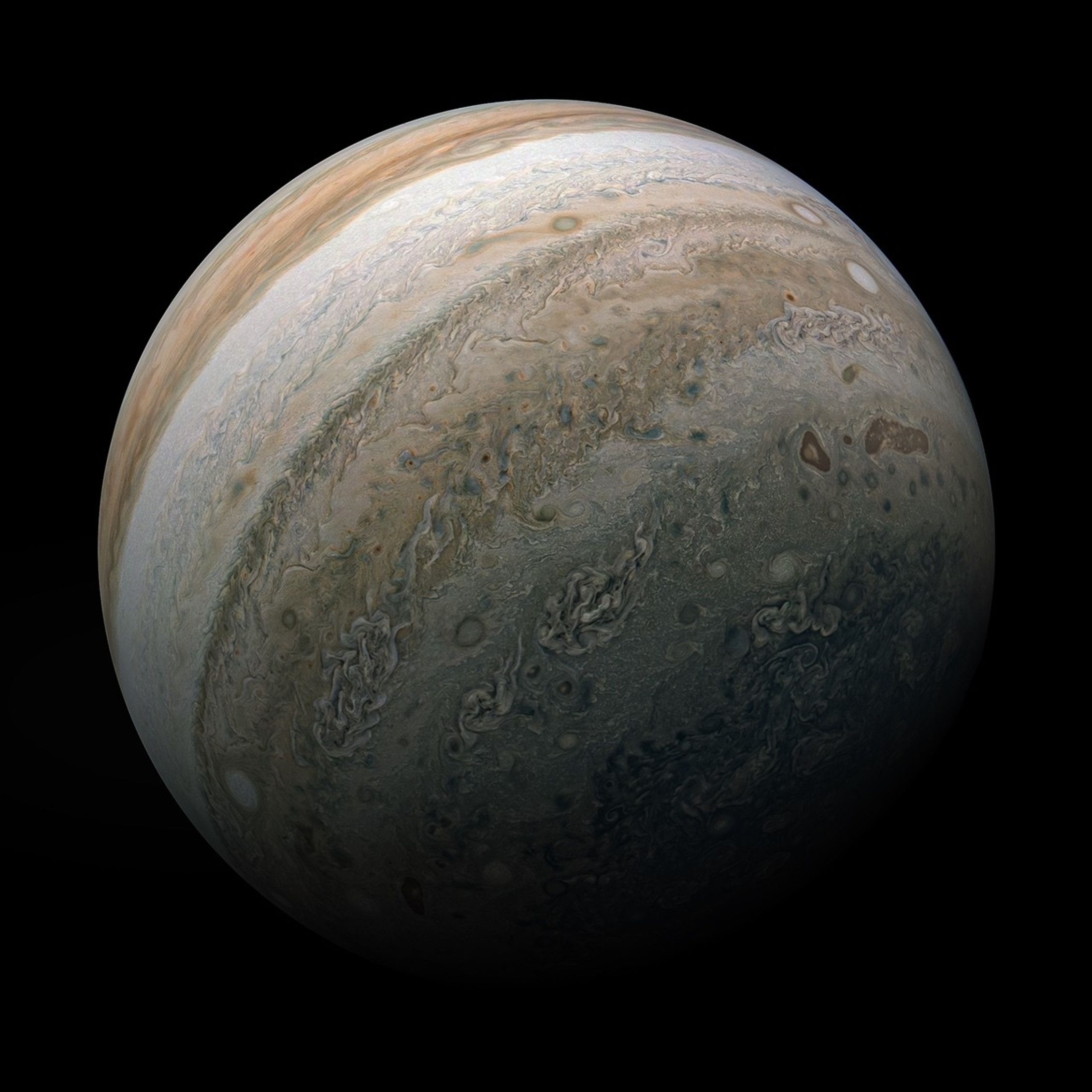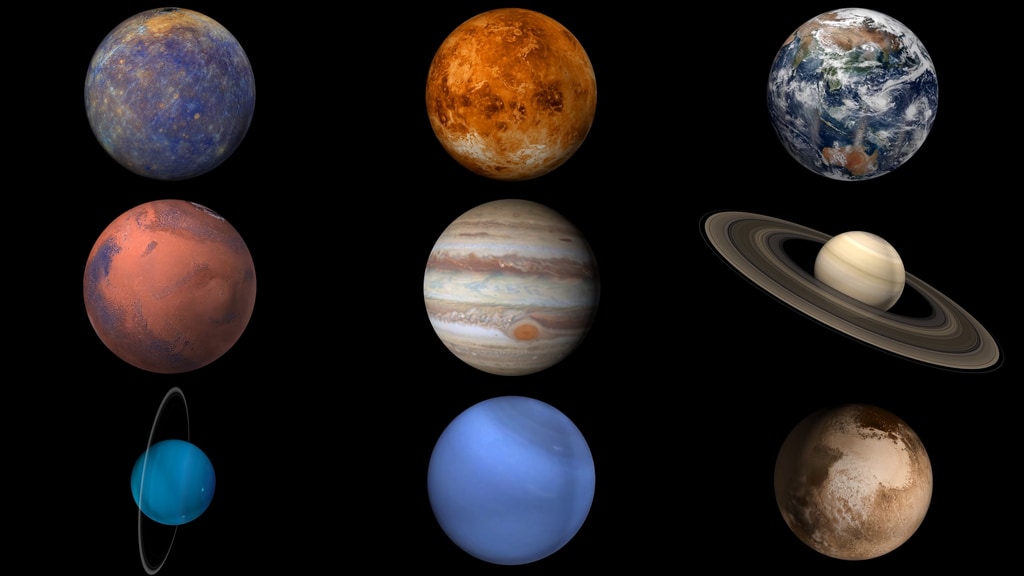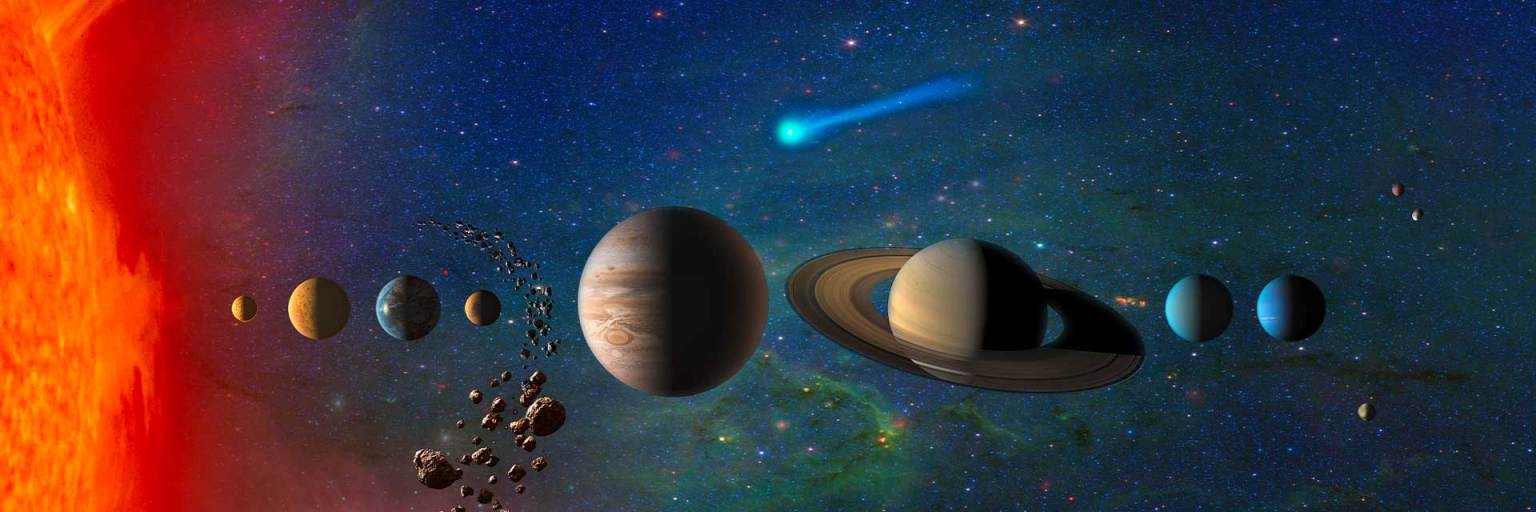Pre-Launch Activities
-
2013: Pre-Project Planning (Pre-Phase A)
Prior to mission selection, mission planners develop candidate mission concepts. Examples included a Europa orbiter spacecraft and a Europa lander. Another concept called for a spacecraft to orbit Jupiter in resonance with Europa’s orbit, enabling science flybys of Europa and reduced exposure to Jupiter’s intense radiation. Given its strong science potential and relatively lower cost and risk, a proposal based on this concept was ultimately approved.
 An early artist's concept of the Europa Clipper spacecraft.NASA/JPL-Caltech
An early artist's concept of the Europa Clipper spacecraft.NASA/JPL-Caltech -
May 2015: Multiple Flyby Concept & Science Instruments Selected (Phase A)
NASA selects the multiple flyby concept for its mission to Europa. Also, nine science instruments are chosen to investigate whether the icy moon has conditions suitable for life. The instruments include cameras, spectrometers, particle detectors, an ice-penetrating radar, and a magnetometer.
 NASA scientists John Grunsfeld, Jim Green, and Curt Niebur (left to right) speak at NASA Headquarters in Washington, D. C., on a May 2015 panel about instruments selected to investigate Jupiter’s moon Europa.NASA/Aubrey Gemignani
NASA scientists John Grunsfeld, Jim Green, and Curt Niebur (left to right) speak at NASA Headquarters in Washington, D. C., on a May 2015 panel about instruments selected to investigate Jupiter’s moon Europa.NASA/Aubrey Gemignani -
February 2017: Multiple-Flyby Mission Moves into Design Phase (Phase B)
During this phase, a preliminary design for the mission's systems and subsystems is completed. Testing proceeds for some spacecraft components, including solar cells and science instrument detectors. Subsystem vendors are selected, as well as prototype hardware elements for the science instruments. Spacecraft subassemblies are built and tested as well.
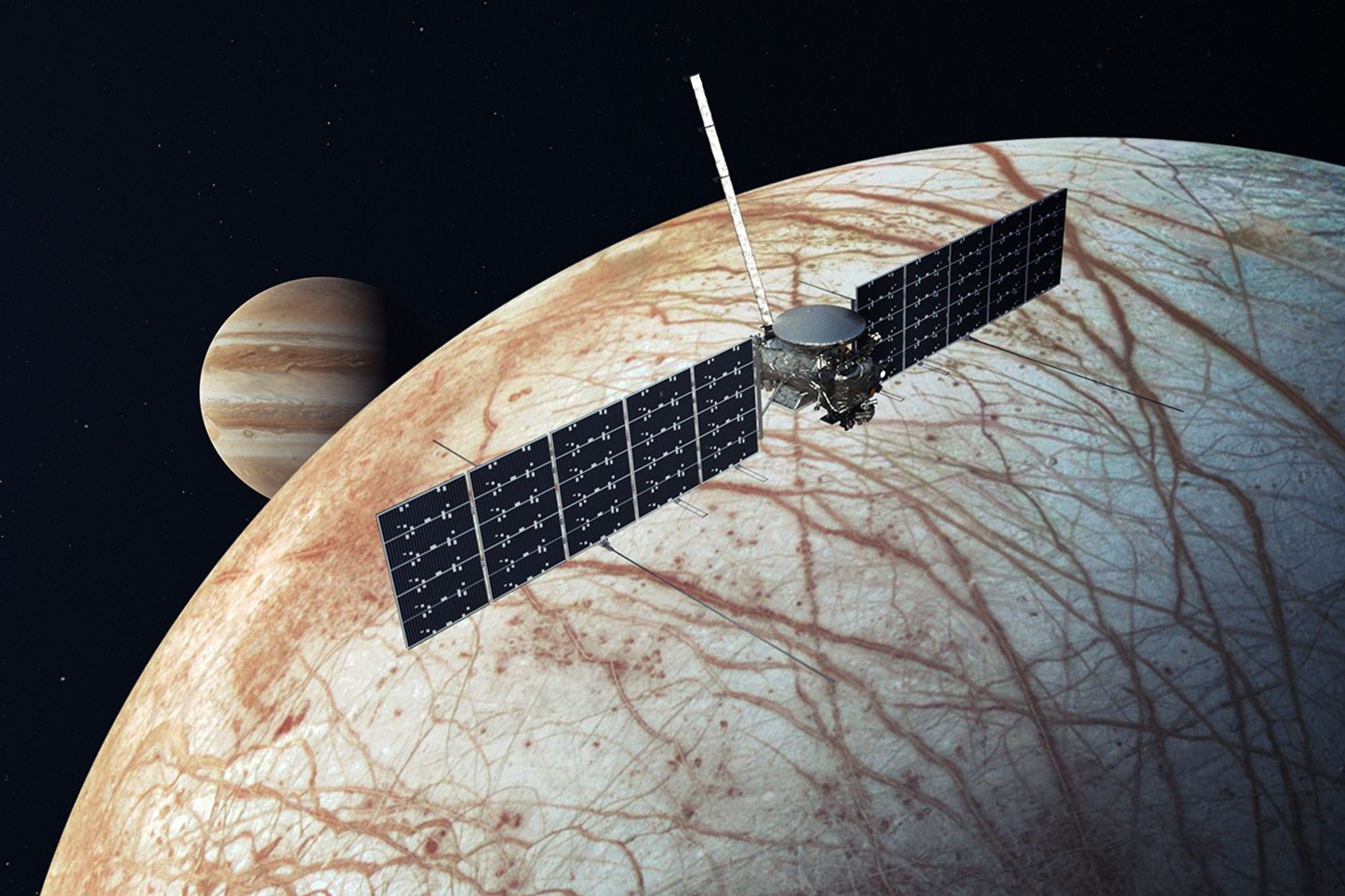 An artist's concept of NASA's Europa Clipper spacecraft.NASA/JPL-Caltech
An artist's concept of NASA's Europa Clipper spacecraft.NASA/JPL-Caltech -
March 2017: Mission Officially Named 'Europa Clipper'
The mission receives its formal name: Europa Clipper. The moniker harkens back to the clipper ships that sailed across the oceans of Earth in the 19th century. Clipper ships were renowned for their grace and swiftness.
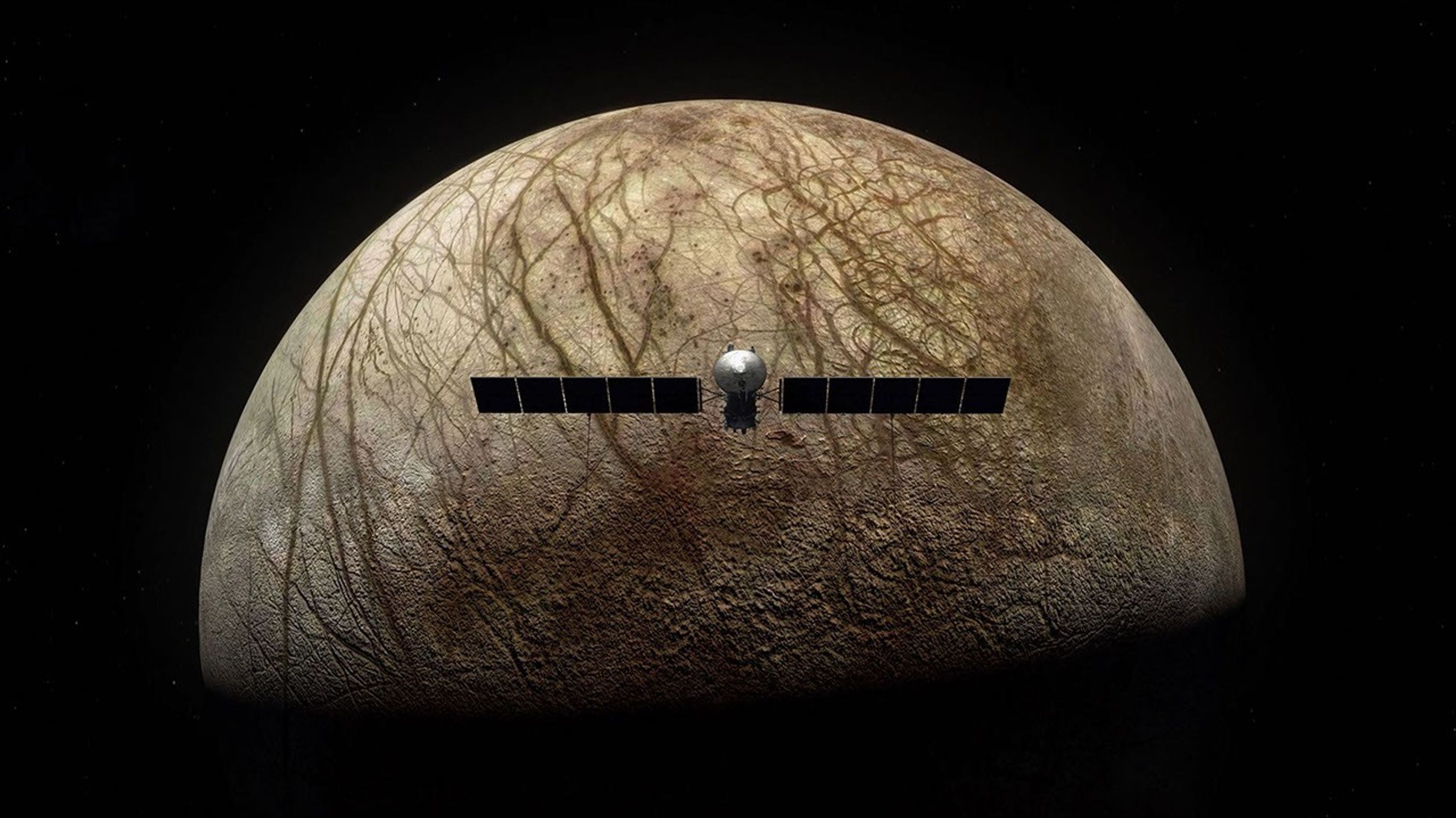 This artist's concept shows Europa Clipper during a flyby of Europa.NASA/JPL-Caltech
This artist's concept shows Europa Clipper during a flyby of Europa.NASA/JPL-Caltech -
August 2019: Spacecraft Fabrication Begins (Phase C)
Europa Clipper moves into its final design phase, and the spacecraft’s construction and testing begins. Components are developed at partner institutions across the United States and in Europe.
 Contamination control engineers in a clean room at NASA's Goddard Space Flight Center in Greenbelt, Maryland, evaluate a propellant tank before it is installed in NASA's Europa Clipper spacecraft.NASA/GSFC Denny Henry
Contamination control engineers in a clean room at NASA's Goddard Space Flight Center in Greenbelt, Maryland, evaluate a propellant tank before it is installed in NASA's Europa Clipper spacecraft.NASA/GSFC Denny Henry -
March 2022: Assembly and Testing Begins (Phase D)
The assembly of Europa Clipper gets underway at NASA’s Jet Propulsion Laboratory (JPL) in Southern California. Engineering components and science instruments are beginning to stream in from across the country and Europe. As each component is installed, tests demonstrate that the instrument functions as expected, building up to tests of the entire spacecraft that show that the spacecraft can do everything needed of it during the mission. When fully assembled, the spacecraft will be larger than an SUV with solar arrays long enough to span a basketball court.
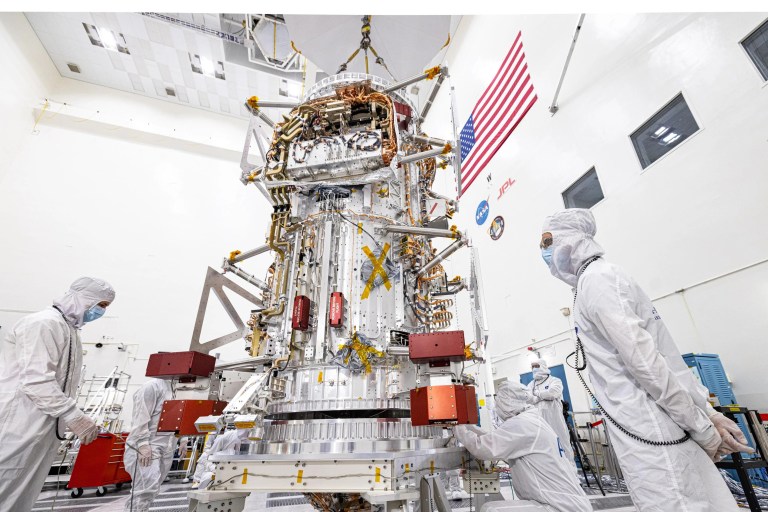 Engineers and technicians inspect the main body of NASA’s Europa Clipper spacecraft after it was built and delivered by the Johns Hopkins Applied Physics Laboratory (APL) in Laurel, Maryland, to the agency’s Jet Propulsion Laboratory in Southern California in early June.NASA/JPL-Caltech/Johns Hopkins APL/Ed Whitman
Engineers and technicians inspect the main body of NASA’s Europa Clipper spacecraft after it was built and delivered by the Johns Hopkins Applied Physics Laboratory (APL) in Laurel, Maryland, to the agency’s Jet Propulsion Laboratory in Southern California in early June.NASA/JPL-Caltech/Johns Hopkins APL/Ed Whitman -
Spring 2024: Spacecraft Ships to NASA's Kennedy Space Center
Europa Clipper makes its journey from California to Kennedy Space Center in Florida to be prepared for launch.
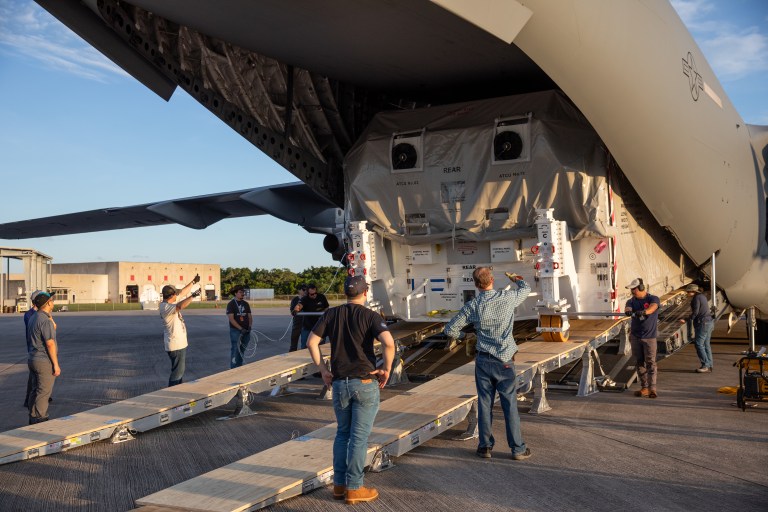 Technicians unload NASA's Europa Clipper from a transport aircraft at Kennedy Space Center in Florida on May 23, 2024.NASA/Isaac Watson
Technicians unload NASA's Europa Clipper from a transport aircraft at Kennedy Space Center in Florida on May 23, 2024.NASA/Isaac Watson -
Summer 2024: Assembly & Testing at NASA's Kennedy Space Center
After Europa Clipper arrives at Kennedy Space Center in Florida, the mission team continues assembly and testing, including installation of the spacecraft’s high-gain antenna. Then the spacecraft is integrated with the rocket, including its fairing, or nose cone.
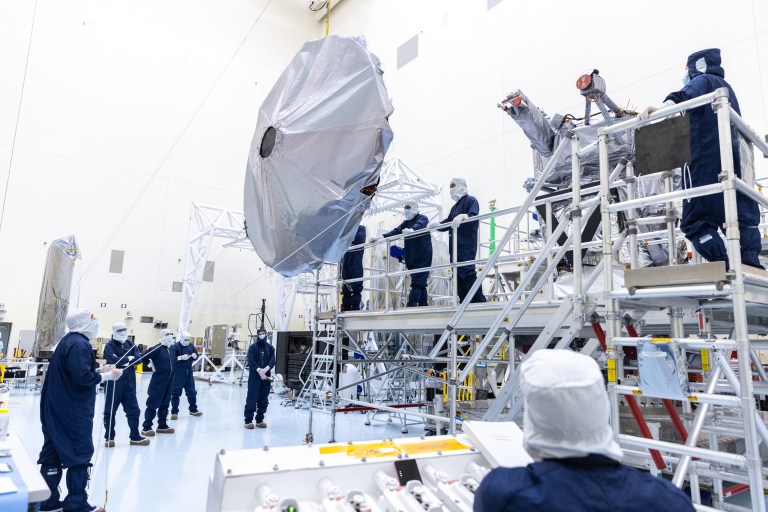 Technicians prepare to install the nearly 10 feet (3 meters) wide dish-shaped high-gain antenna on NASA’s Europa Clipper at the Payload Hazardous Servicing Facility at Kennedy Space Center in Florida on June 17, 2024.NASA/Kim Shiflett
Technicians prepare to install the nearly 10 feet (3 meters) wide dish-shaped high-gain antenna on NASA’s Europa Clipper at the Payload Hazardous Servicing Facility at Kennedy Space Center in Florida on June 17, 2024.NASA/Kim Shiflett -
Oct. 14, 2024: Launch
Europa Clipper launches from Kennedy Space Center in Florida on a SpaceX Falcon Heavy rocket on Oct. 14, 2024.
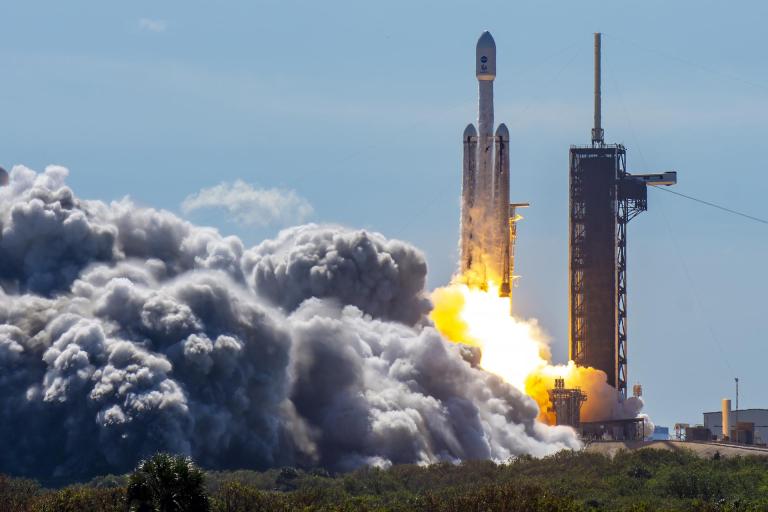 Europa Clipper lifts off from Launch Complex 39A at NASA’s Kennedy Space Center in Florida at 12:06 p.m. EDT on Oct. 14, 2024.SpaceX
Europa Clipper lifts off from Launch Complex 39A at NASA’s Kennedy Space Center in Florida at 12:06 p.m. EDT on Oct. 14, 2024.SpaceX -
March 2025: Mars Flyby
On March 1, 2025, Europa Clipper streaked about 550 miles (884 kilometers) above the surface of Mars for what's known as a gravity assist — a maneuver to bend the spacecraft’s trajectory and position it for a critical leg of its long voyage to the Jupiter system.
 This artist's concept shows NASA's Europa Clipper flying by Mars during its Mars gravity assist.NASA/JPL-Caltech
This artist's concept shows NASA's Europa Clipper flying by Mars during its Mars gravity assist.NASA/JPL-Caltech -
December 2026: Earth Flyby
Europa Clipper comes home (briefly) for its second gravity assist, swinging about 2,000 miles (3,200 kilometers) from Earth. This flyby, along with the earlier Mars flyby, gives the spacecraft enough energy to reach Jupiter.
 An image of Earth from the Deep Space Climate Observatory, or DSCOVR.NASA
An image of Earth from the Deep Space Climate Observatory, or DSCOVR.NASA -
April 2030: Jupiter Orbit Insertion
Europa Clipper will use its engines as brakes to slow the spacecraft down to match Jupiter's orbit. This process will take about six hours — unusually long for a space probe. However, Europa Clipper’s engines are designed and tested to ensure they are up to the task. Europa Clipper will fly by Jupiter’s moon Ganymede as it does so.
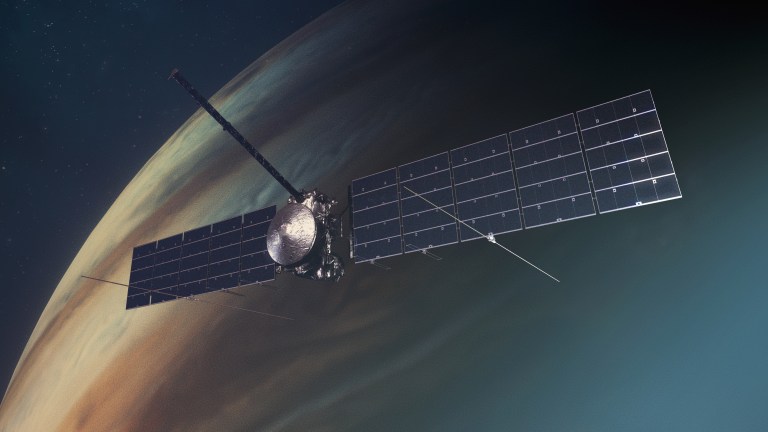 This artist's concept depicts NASA's Europa Clipper spacecraft with solar arrays fully deployed in orbit around Jupiter.NASA/JPL-Caltech
This artist's concept depicts NASA's Europa Clipper spacecraft with solar arrays fully deployed in orbit around Jupiter.NASA/JPL-Caltech -
October 2030: Spacecraft Shaping Orbit
Europa Clipper will use multiple flybys of Jupiter’s Galilean moons, including Ganymede, the largest moon in our solar system, to reduce the spacecraft orbit to the desired resonance with Europa’s orbit.
 This enhanced image of Ganymede was taken by the JunoCam imager aboard NASA’s Juno spacecraft during the mission’s June 7, 2021, flyby of the icy moon on Juno’s 34th pass close to Jupiter.NASA/JPL-Caltech/SwRI/MSSS/Kalleheikki Kannisto CC BY
This enhanced image of Ganymede was taken by the JunoCam imager aboard NASA’s Juno spacecraft during the mission’s June 7, 2021, flyby of the icy moon on Juno’s 34th pass close to Jupiter.NASA/JPL-Caltech/SwRI/MSSS/Kalleheikki Kannisto CC BY -
Spring 2031: First Europa Flyby
During the transition to the mission’s first science campaign, Europa Clipper makes its first flyby of its target: Jupiter’s icy moon Europa. Europa Clipper uses this flyby to help shape its orbit around Jupiter. It will gather the first close-up Europa science observations of the mission.
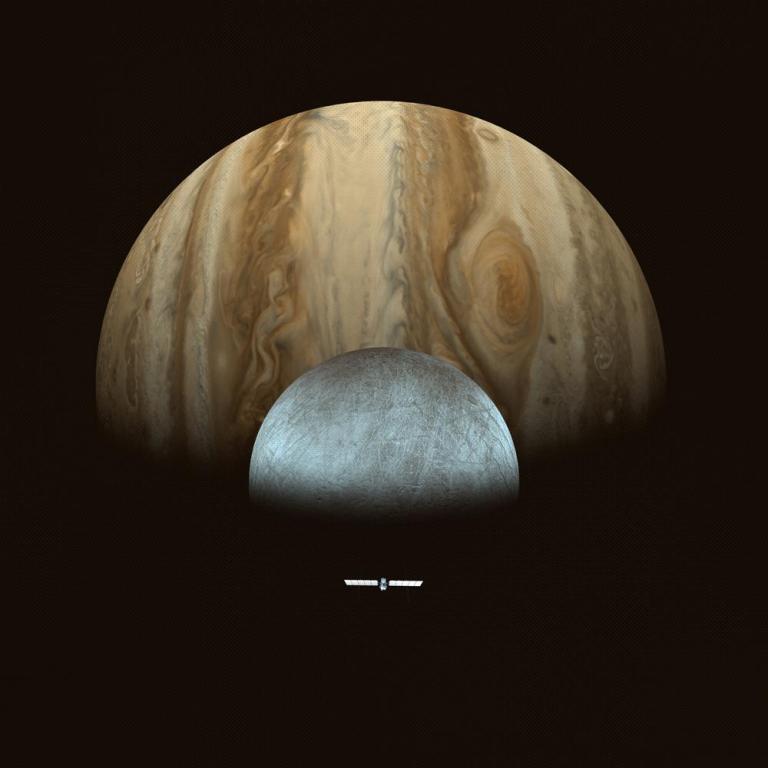 This artist's concept depicts NASA's Europa Clipper spacecraft approaching Europa.NASA/JPL-Caltech
This artist's concept depicts NASA's Europa Clipper spacecraft approaching Europa.NASA/JPL-Caltech -
May 2031: First Science Campaign Begins
Repeated flybys of Europa’s anti-Jovian side begin. The anti-Jovian side of Europa is the one that faces away from Jupiter. Spacecraft instruments gather data on Europa's subsurface ocean, icy shell, surface, and thin atmosphere. Closest-approach altitudes will be approximately as low as 16 miles (25 kilometers) from the surface of Europa.
 This animation shows Europa Clipper flying by Europa with Jupiter in the background.NASA/JPL-Caltech
This animation shows Europa Clipper flying by Europa with Jupiter in the background.NASA/JPL-Caltech -
May 2033: Second Science Campaign Begins
Europa Clipper begins its second science campaign, now concentrating flybys over the hemisphere facing toward Jupiter (its sub-Jovian side). After the mission’s first science campaign, Europa Clipper’s trajectory transitions so that flybys will continue over the sub-Jovian side of Europa. There the Europa Clipper spacecraft will continue to use its full suite of instruments to gather data about the icy moon.
 A close-up image of Europa's surface.NASA
A close-up image of Europa's surface.NASA -
September 2034: Possible End of Mission: Ganymede Impact
The current end of mission plan calls for Europa Clipper to deorbit into Ganymede's surface after its mission is complete.
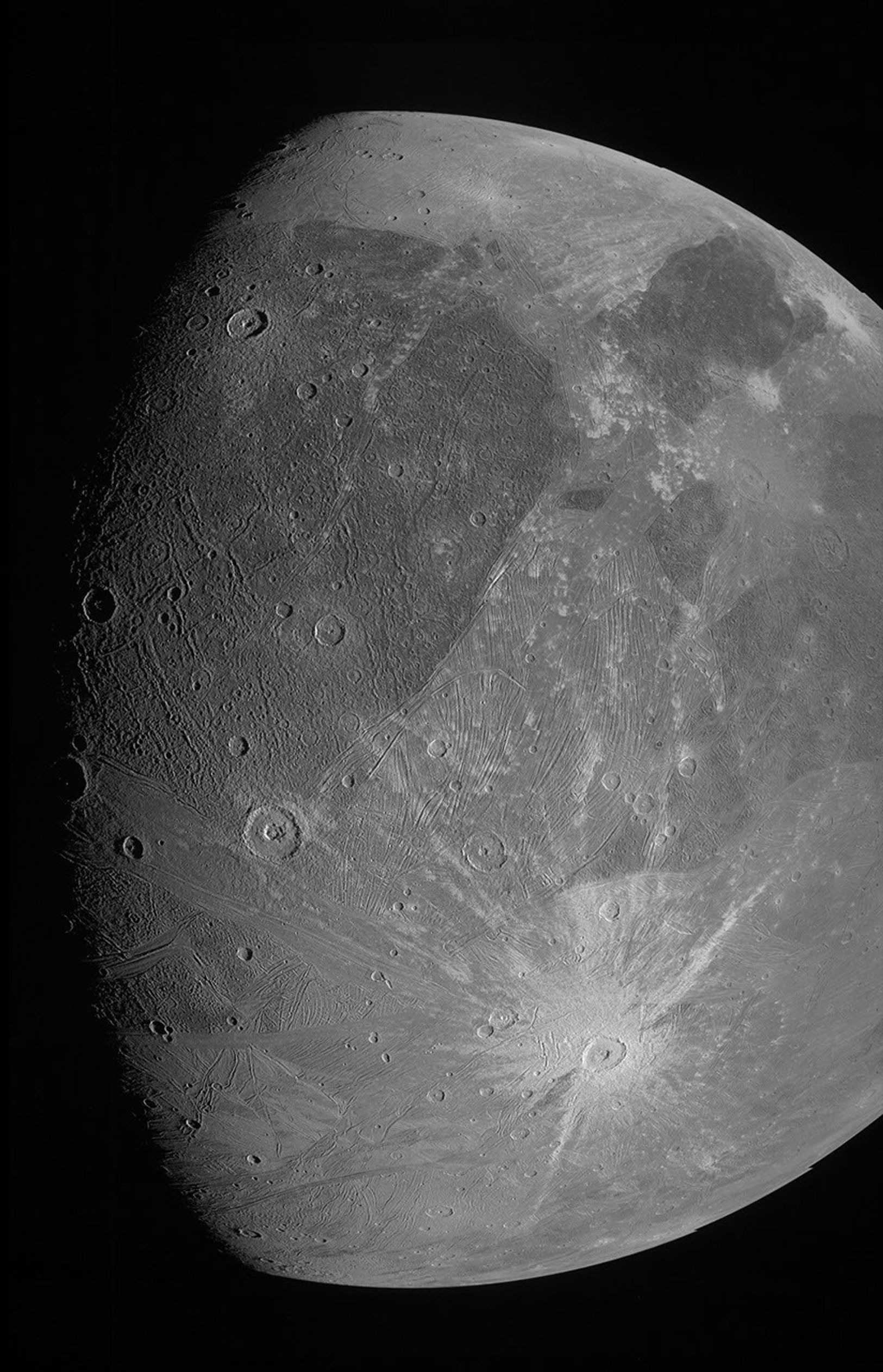 This image of Ganymede was taken by the JunoCam imager aboard NASA's Juno spacecraft during its June 7, 2021, flyby of Jupiter's largest moon.NASA/JPL-Caltech/SwRI/MSSS
This image of Ganymede was taken by the JunoCam imager aboard NASA's Juno spacecraft during its June 7, 2021, flyby of Jupiter's largest moon.NASA/JPL-Caltech/SwRI/MSSS



























